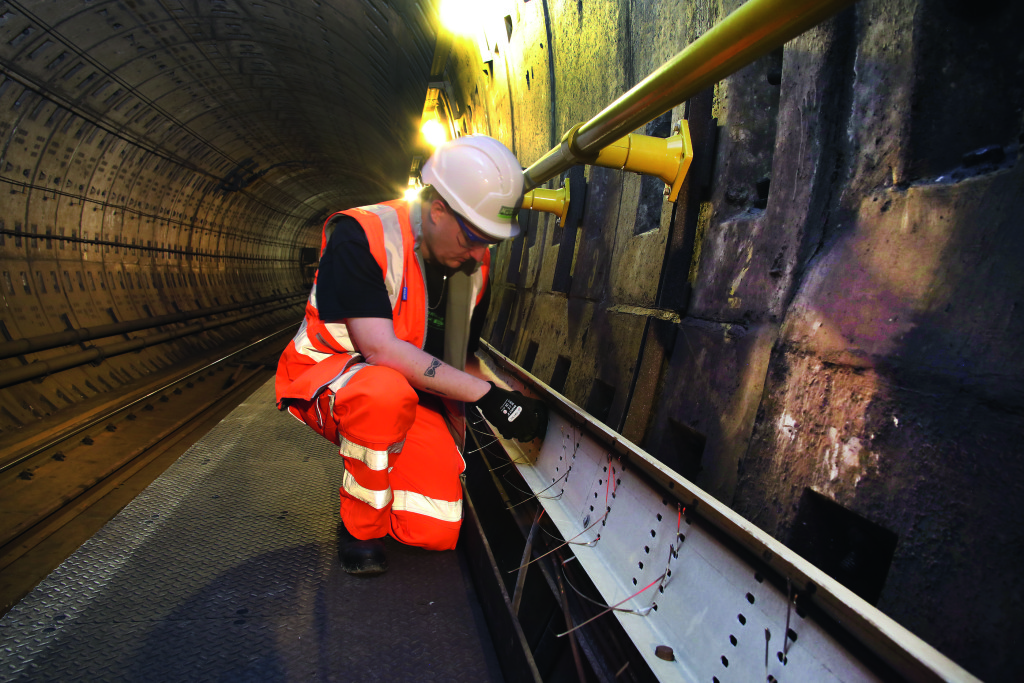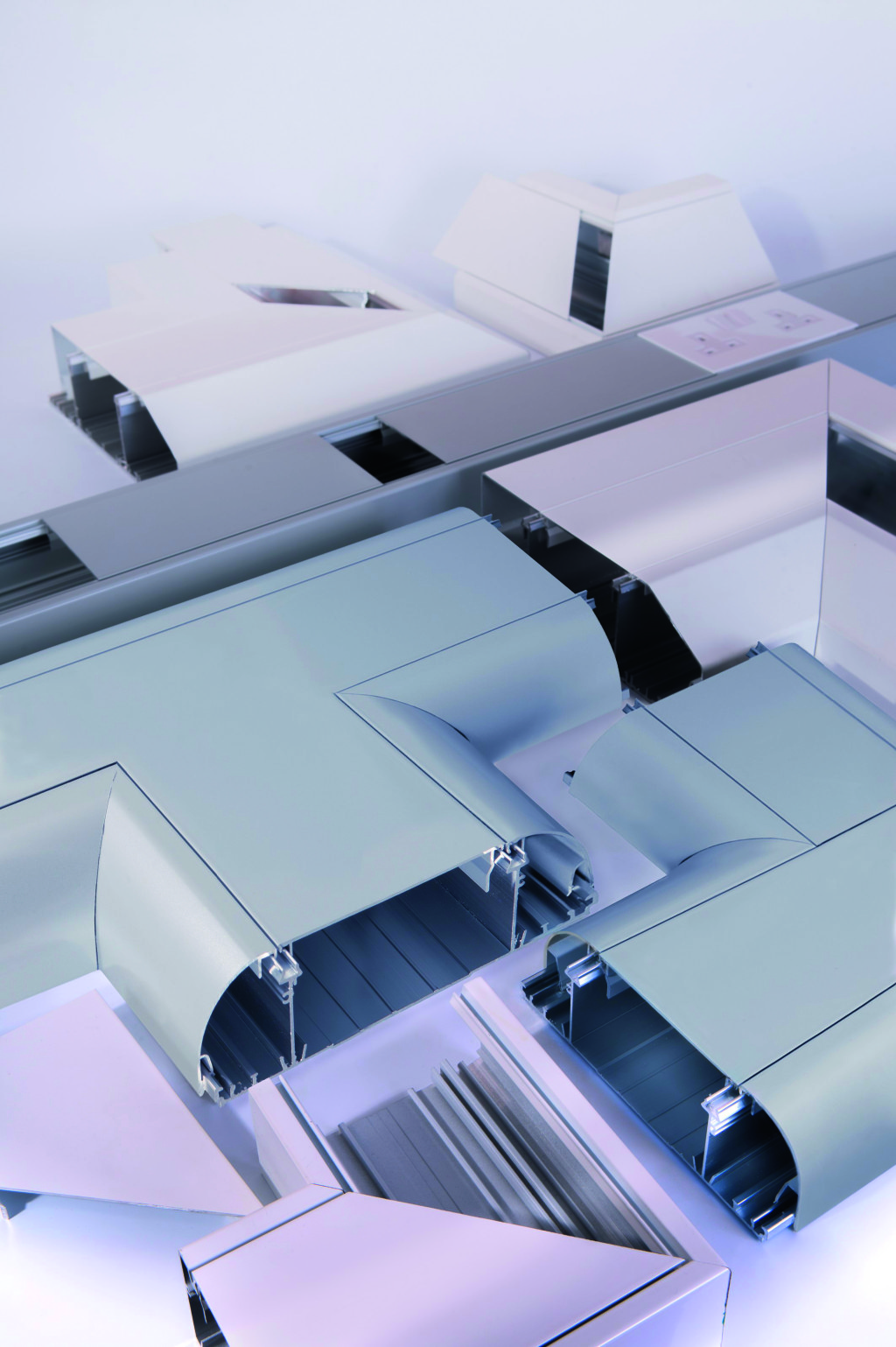Choosing the right cable management for the job

Barry Roberts, National Specification Manager at Marshall-Tufflex looks at the properties of different cable management system materials and the applications for which these products are most suitable.
With different types of solution and materials available, choosing the correct cable management for a particular building or application is not always simple. While PVC-U is often the go-to because it is cost-effective, easy to install and versatile, for some applications like; steel, aluminium or Glass, Reinforced Polyester (GRP) can offer additional benefits. To select the most suitable product, the requirements of the building users, the environmental conditions and installation factors must all be considered.
Mechanical strength
Often one of the most basic and ultimately important considerations is ensuring the cable management system can withstand the level of wear it will likely be exposed to. Dado trunking, due to where it is mounted within the room, may receive accidental heavy impacts, especially in busy environments. For example; where equipment or materials are moved frequently, such as in warehouse environments, the trunking can be damaged if it is not sufficiently robust. In these situations, a steel or aluminium system may be most suitable. While the initial cost is often higher, the greater mechanical strength that a metal system offers can minimise the need for additional maintenance and replacement of damaged sections.
Antimicrobial systems
For certain environments, such as hospitals and other healthcare facilities, ensuring maximum hygiene and protecting those using the building is of the highest priority. As a surface mounted product that may be touched by many people, it is important to carefully consider the specification of trunking products. Cable management systems with advanced antimicrobial properties can help minimise the spread of germs and bacteria.
There are a range of different antimicrobial agents. However, silver ion-based technology is one of the most effective forms of continual protection. The silver ion formulation can either be added to the PVC-U or ABS when it’s manufactured or applied to the surface post-production. The silver ions disrupt the key cell functions of bacteria and prevent them from reproducing on surfaces. The presence of silver ions has been proven to reduce the bacteria surviving on the surface by 99.9%. In addition, it is proven to be effective against potentially dangerous bacteria such as Methicillin Resistant Staphylococcus Aureus (MRSA), Escherichia coli (E. coli) and Klebsiella pneumoniae. When combined with a robust cleaning regime, the antimicrobial properties can protect those using the building from the risks of bacteria.
Do be aware, the durability and longevity of the protection depends on how it is incorporated into the material. Post-production surface applications are generally less effective in the long-term. This is because any scratches or damage to the surface, which is common in busy, high-traffic environments, will remove the coating and leave exposed areas where the bacteria can survive and multiply. In contrast, where the silver ions are integrated during manufacturing and therefore present throughout the material, damage to the surface will not impair its effectiveness – offering a longer-lasting and more reliable protection. It is worth noting that due to the nature of the manufacturing process, it is only possible to achieve this level of antimicrobial protection with PVC-U or ABS products.
Must be compliant
To ensure the quality and performance of the product, any antimicrobial trunking system should be manufactured in line with the ISO 22196:2011 standard and be compliant with the European Biocidal Products Directive (BPD).
While antimicrobial products are commonly specified within the healthcare sector, they may also be beneficial in other high-traffic buildings and public spaces including schools, colleges, universities and leisure facilities.
Cable protection
For some applications, there may be a need to protect the cables from radiated electromagnetic interference (EMI). As the source of this interference can be both nearby equipment and other cables routed alongside, there are different solutions that may be suitable. For some buildings, separation of power and data cables may be required to protect the latter from EMI. This is most common where a large number of power, data and other service cables need to be contained within a system, such as in large offices. As PVC-U does not provide this type of protection, metal dividers (typically steel or aluminium) can be fitted inside the trunking. This approach can be useful where a PVC-U system is required, such as to also ensure antimicrobial protection.
However, these dividers do not provide protection from external sources of EMI, which can include any nearby electrical device. Trunking systems constructed from steel or aluminium can provide a more comprehensive level of EMI protection. For example; Marshall-Tufflex’s XL301 and XL302 aluminium trunking provides three large capacity compartments with aluminium dividers for easy separation of different cable types.

Environmental conditions
A further key consideration when choosing cable management systems is the environment that the products will be fitted in. Levels of moisture, humidity and temperature as well as exposure to chemicals must all be considered. Due to the risk of corrosion, steel trunking, conduit and cable trays are not suitable for areas with limited weather protection or with high levels of moisture. Although aluminium is generally more resistant to moisture due to its naturally occurring aluminium oxide coating, it can still corrode. For example, when in contact with other metals through a process of ‘galvanic corrosion’ or in acidic or alkaline environments that will strip it of its natural protective layer. Similarly, PVC-U can adversely react with certain chemicals, which may damage the material.
Glass Reinforced Polyester (GRP) provides an alternative that is suitable for these environments. GRP does not corrode, can withstand contact with many common chemicals, including acidic compounds, and is UV and temperature resistant. As such, GRP cable management products are used widely in the rail, road and marine sectors as well as within petrochemical and industrial process facilities. GRP tray, ladder and trough systems are also highly suitable for more general applications such as cable management in external spaces and outdoor storage areas. It is also ideal for use in leisure facilities such as swimming pools, where solutions must cope with humidity and long-term exposure to airborne compounds.
Fire performance
A factor that has gained increased importance in recent years is the issue of fire performance. Selecting non-fire-propagating products with low emission properties has never been more important. PVC-U as a material is resistant to ignition and is self-extinguishing so it does not contribute to the spread of fire. Similarly, aluminium, steel and GRP are all classified as low smoke zero halogen (LS0H) materials.
In addition, the 18th Edition of the Wiring Regulations also includes enhanced regulations around fire safety. In the event of a fire, falling and fallen cables can present a serious hazard to those evacuating as well as firefighters moving into and through the building. Regulation 521.10.202 of the Wiring Regulations requires that all cables be adequately supported using non-combustible fixings to prevent premature collapse in the event of a fire. This means that the cables have to be fixed to the fabric of the building using metal clips and supports that have a melting point high enough to sufficiently withstand the heat of a fire – 1000°C for up to 120 minutes. In effect, materials such as plastic and aluminium are no longer acceptable as a sole form of support. Where PVC-U or aluminium trunking or trays are used, fire-resistant cable clips must be fixed to the wall (within the trunking) or the ceiling.
Some organisations are aiming for a higher level of fire safety and as a result are specifying steel systems due to the higher melting point of between 1200 and 1500°C, depending on the composition. Providing the steel cable management systems are connected to a fire-resistant element of the building’s fabric, then it can effectively protect from the risk of fallen cables.
Installation factors
In addition, there are some situations where the requirements of the building can be met while improving the speed or simplicity of installation. This is often important where project timeframes are under pressure or if installation has to be completed with minimal disruption to occupants.
Flexible conduit is typically simpler and quicker to install. However, many products do not meet all the technical or functional requirements. The need for physical or electromagnetic cable protection means that galvanised steel is often selected. Multi-layer conduit, such as MT Supertube that comprises polyethylene internal and external layers over a continuous aluminium tube, provides flexibility, mechanical strength and EMI shielding when metal fittings are used. This type of conduit can be fitted easily without the need for specialist equipment and can be supplied in coils of up to 100 metres, meaning fewer fittings and minimal waste. This simplicity can also reduce labour costs.
When choosing a cable management system, there is no one-size-fits-all solution, and many factors must be considered. A leading supplier, that can also offer a full range of systems, will be able to provide guidance on the best option for a given application to ensure all requirements are met.








